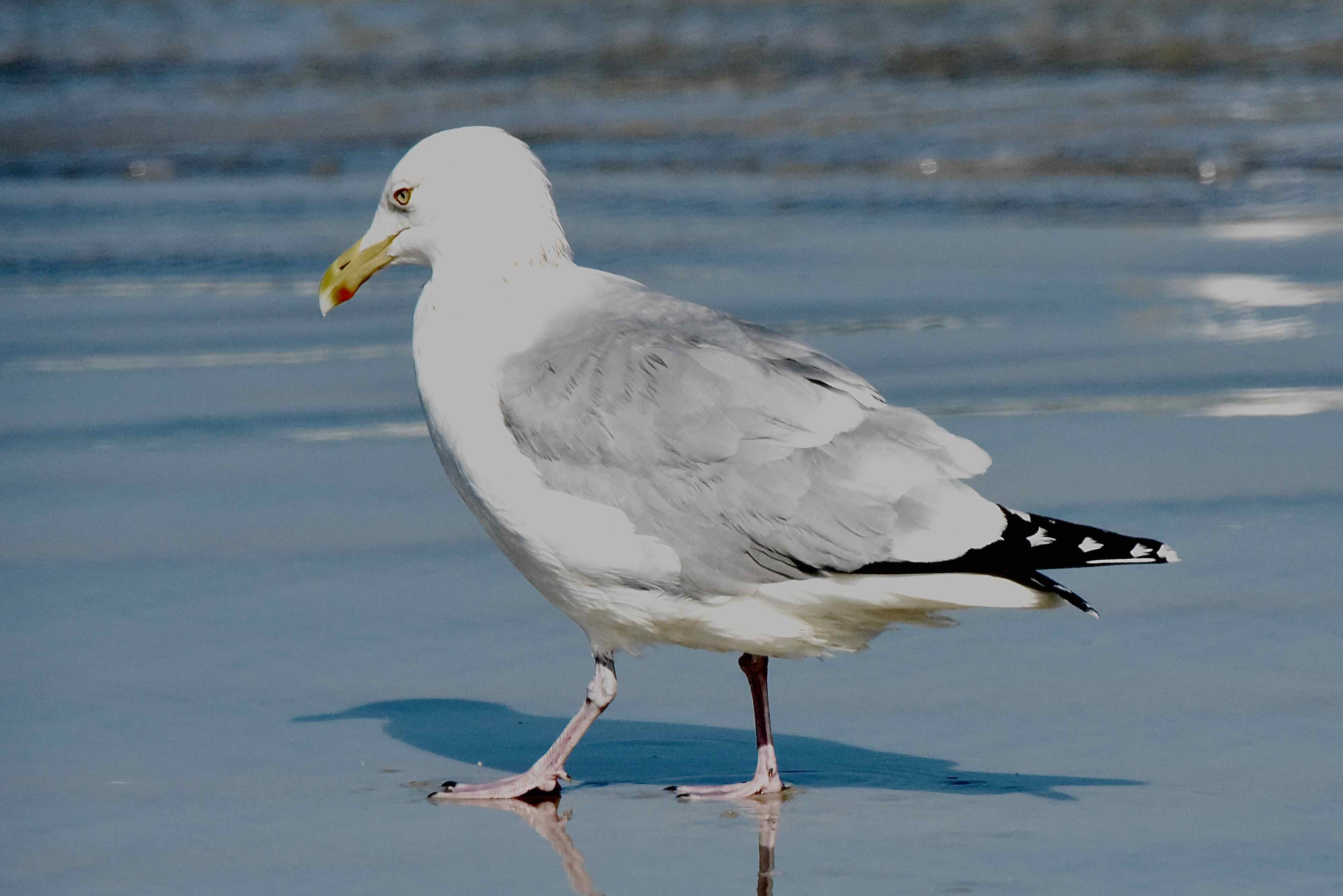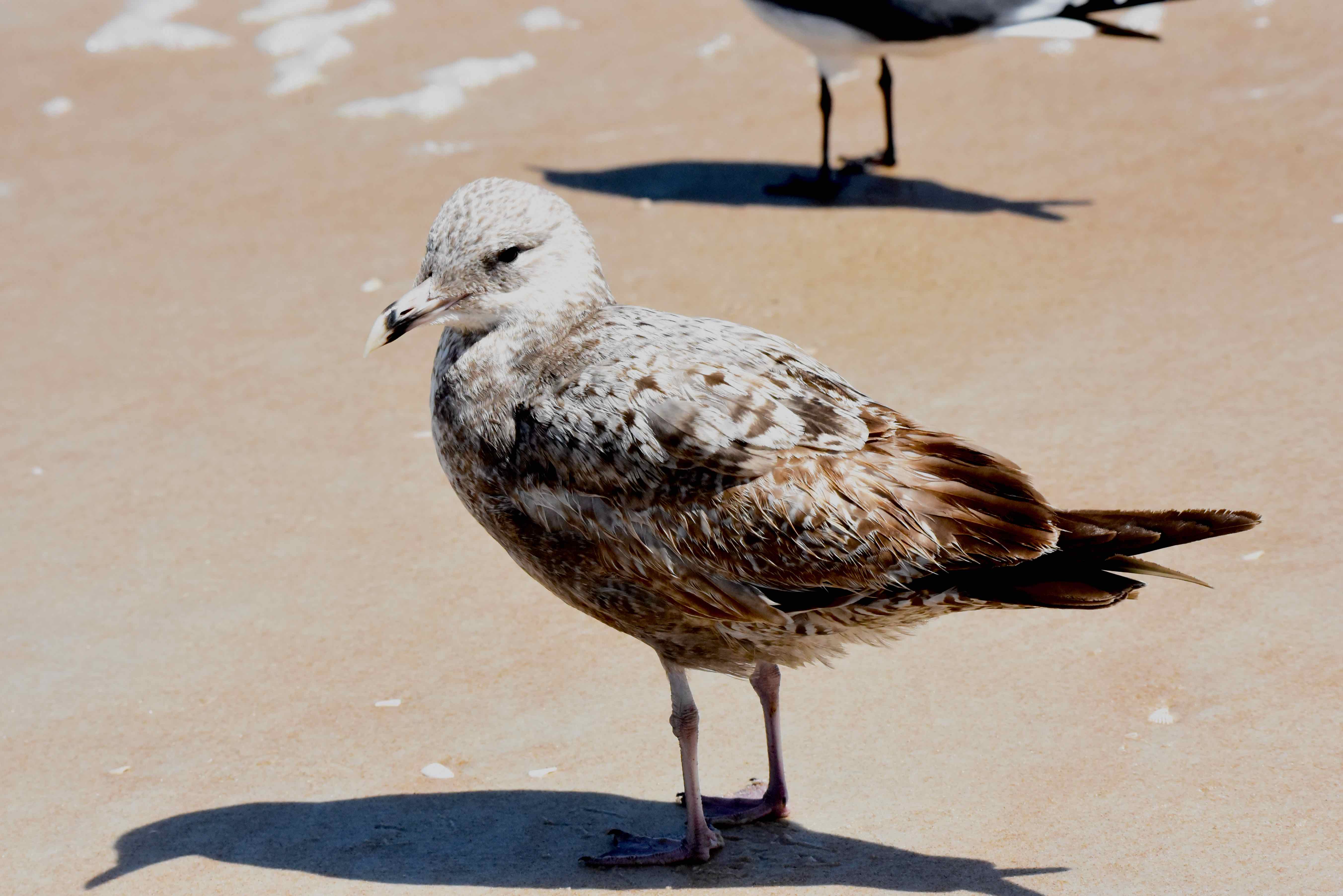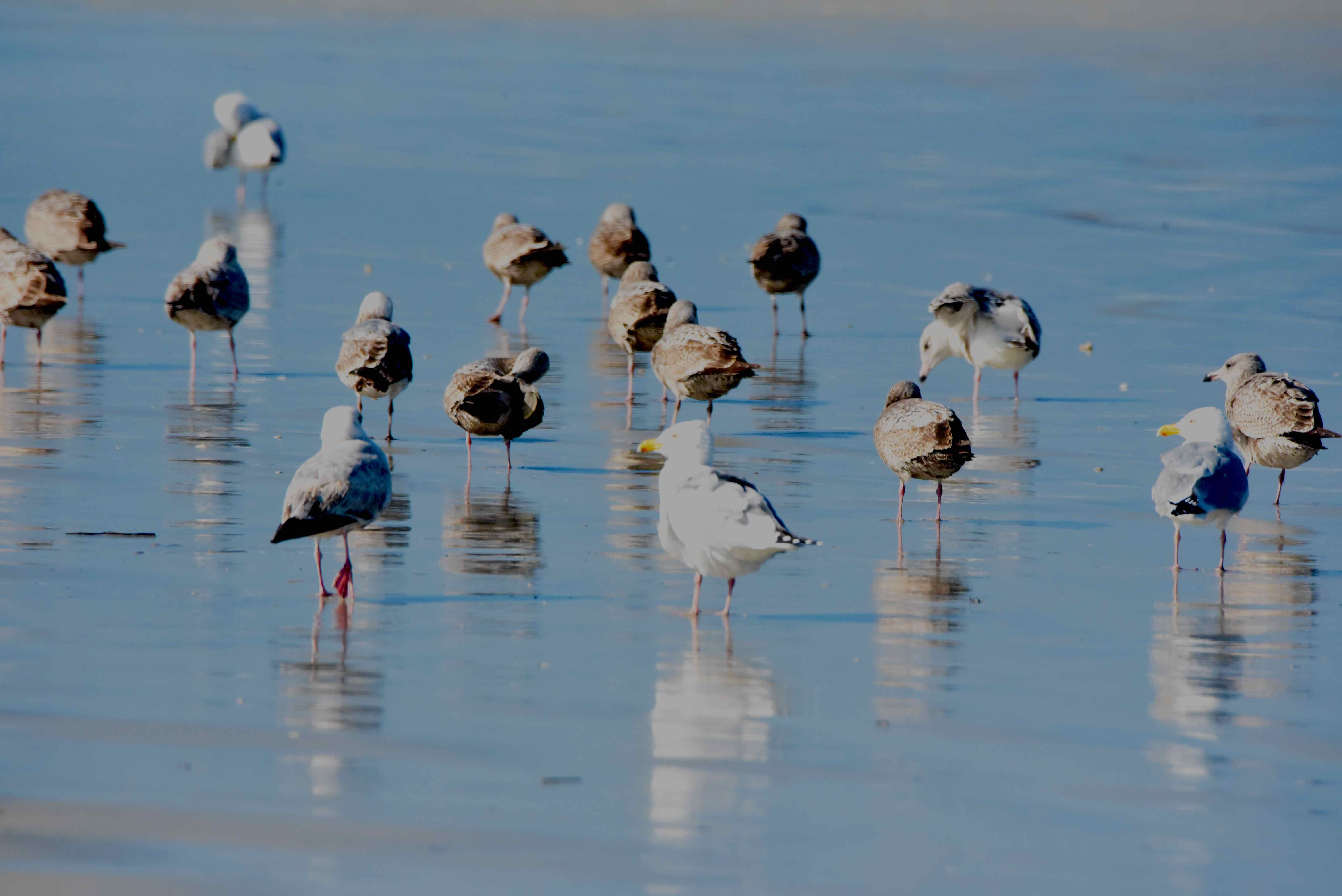
Herring gull, photographed at Ponce Preserve, Ponce Inlet, Volusia County, in March 2019.
The herring gull, Larus argentatus, is a bird of many looks. It takes four years for one of these birds to go from hatchling to adult, and each year the plumes change a bit from the mottled browns of a yearling to the grays and whites sported by a fully mature bird.
But there is one thing that stays the same no matter the age: pink legs and feet. See them on a grayish-white gull and a reddish-orange spot near the tip of the bill, and there is a pretty good chance you're looking at this bird in its full, adult form. But there are a few look-alikes, and juveniles can be difficult to sort out.
Herring gulls are winter visitors to Florida. In summer, they can be found nesting in the far north, from Alaska, through Canada's northern territories, into the provinces, the Great Lakes and parts of New England. When winter's chill blows, they'll retreat to the coast, to parts of the Caribbean and even into the Mississippi Valley and the interior United States.
They are mostly migratory, but there are year-round populations in some areas, particularly the Great Lakes, southern Alaska and New England. Older birds in these areas tend to stay put through winter, while younger birds are more likely to migrate. Their abundant numbers and wide distribution make them one of the most familiar of all gulls. They can be found along beaches, inland lakes and rivers, mudflats, farm fields, parking lots and garbage dumps. They will roost with other gulls in open areas where predators can be quickly spotted.
Herring gulls are large birds, approaching two feet in length, with a wingspan of nearly five feet. Fully mature adults are white in the head and neck, gray below, with a black tail, bright yellow bill with a red spot at the tip. And pink legs and feet, of course.
The western gull is a close match, but it's only found along the Pacific coastline from California into Mexico; the California gull is also close, but its range doesn't extend east of Mississippi River. It also has dark eyes to the herring gull's light yellow, and it doesn't have pink legs. The Iceland gull has a similar look, but North Carolina is the southern end of its range. It's not exactly implausible that one might wander this far south, and if one does, a sharp eye can distinguish it from the herring gull. For one, its bill is smaller and thinner than the herring's, and for another, it lacks the herring's black wing tips.
Two other close matches, the ring-billed gull and the lesser black-backed gull, are commonly seen in Florida. The ring-billed has a black band near the tip of the bill instead of the reddish spot, and it doesn't have pink legs, while the lesser black-backed has yellow legs and and a dark gray, almost black back, as the name suggests.
Herring gulls breed in forests, near lakes; they'll often form colonies on isolated islands and other places that offer safety from land predators. They are ground nesters, hollowing out a depression that's a foot across, more or less, and about a half a foot deep, in soft soil or sand and usually near some natural structure — a rock, for example — that will offer a little protection and concealment. Females have one brood a year, with one to three eggs per clutch. Incubation takes about a month, and both parents share sitting duties. Offspring are able to move about the nest area in a day or two after hatching, but remain within that area for as long as 50 days. Both parents feed their offspring by regurgitation. Yum! Mom and dad will to continue to feed them for as long as a month afterwards. A herring gull pair remains together for life.
Herring gulls forage by soaring over shorelines looking for fish or scraps. Near the surface, they'll dive to grab prey. They'll patrol tidal flats looking for invertebrates, grabbing shellfish, like crabs, and drop them onto rocks to break them open. They'll congregate around fishing boats and garbage dumps, follow whales and dolphins, scooping up fish driven to the surface.
The International Union for Conservation of Nature rates herring gulls as "least concern," which means it's presently in no danger of extinction. However, their numbers have been declining for years, and overfishing, pollution and pesticides are threats.
Herring gulls are members of Laridae, the family of gulls, terns and skimmers.
Click on photo for larger image

Links for Herring Gull


